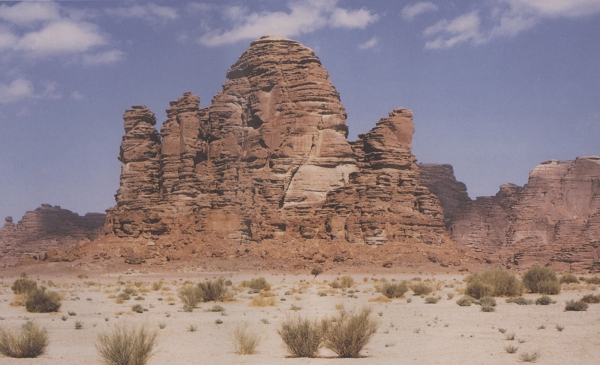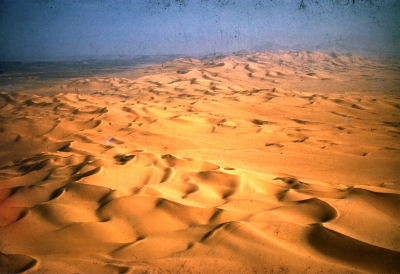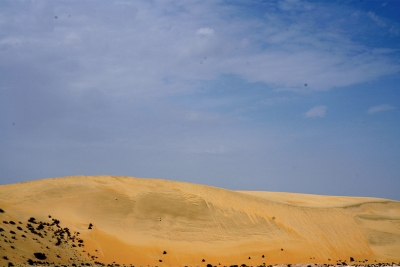
Al-Hammad Plateau is located east and north of Harrat al-Harrah in al-Jawf Province, north of the Kingdom of Saudi Arabia. It is a flat-surfaced plateau with few major valleys, as most of its valleys are tributaries ending in local basins. The plateau's elevation ranges between eight hundred and 850 m, except for Mount Umm Aw’al, which reaches 1,014 m, and Mount Wa’ilah at 936 m, located northeast of Turayf.
Boundaries of al-Hammad Plateau
Longitude 40° 30' E serves as the dividing line between al-Hammad Plateau and al-Hijarah Plateau to its east. Beyond this line to the east, valleys become more frequent, and the general appearance of al-Hammad Plateau, characterized by its flat surface easily navigable by vehicles in all directions, begins to change.
Components of al-Hammad Plateau
Al-Hammad Plateau is composed of Eocene rocks with flinty limestone in the north and west, and Cretaceous limestone from al-Armah Formation in the east. It features numerous depressions (Qi’an), seasonal ponds (Fiyad), and basins (Khabari), including Qa’ al-Amhas, Qa’ al-Tusiya, Fiyad al-Awja, Faydah al-Shaflihiyah, and Khabari al-Amhas in al-Ajramiyat area, as well as al-Shuwayhitiyah, north of al-Jawf. The surface of al-Hammad Plateau is intersected by valleys and watercourses flowing toward the northeast.
Sand in al-Hammad Plains
The plains of al-Hammad, located northwest of the Kingdom, were formed by wind erosion, which carried fine sediments and deposits from their original locations to other areas, leaving behind coarse materials in the form of scattered remnants typically composed of flinty limestone fragments. Historically, al-Hammad Plains were daunting for travelers due to the scarcity of valleys and water sources, prompting them to seek alternative routes whenever possible. These plains are also a source of sand for al-Nufud al-Kabir and al-Dahna deserts.
Rainfall in al-Hammad Plains
Al-Hammad Plains are located in desert areas where annual rainfall does not exceed one hundred mm, a characteristic feature of the extremely arid desert climate. A French geographer described them as "unique deserts, or rather, true deserts," while a German geographer remarked, "When the sun casts its scorching rays on the flint-covered surfaces of al-Hammad, every fragment and shard acts as a tiny mirror reflecting the sunlight. This makes visibility extremely difficult due to the purple glare enveloping all directions around you."
Related quizzes
Related articles


